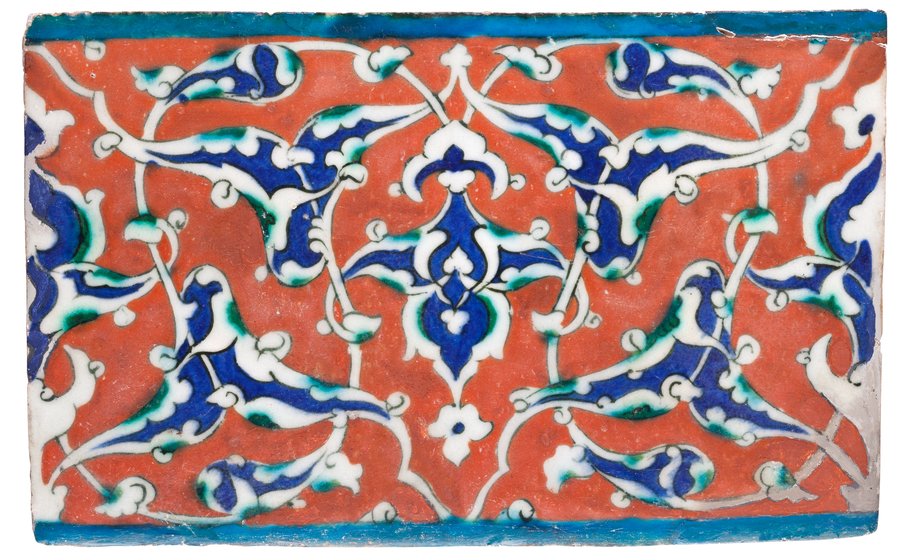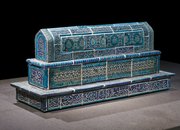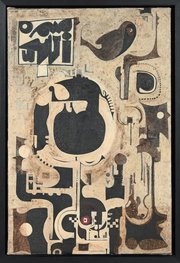
Iznik Tile
Museum of Islamic Art
- Title:
- Iznik Tile
- Production place:
- Iznik
- Date:
- 1590
- Period:
- Ottoman
- Title:
- Iznik Tile
- Production place:
- Iznik
- Date:
- 1590
- Period:
- Ottoman
- Material:
- Fritware, Pigment, Glaze
- Technique:
- Underglaze painting, Glazing
- Dimensions:
- 16.0 × 25.7 × 1.7 cm
Iznik pottery is named after the town of Iznik, in western Anatolia (modern day Turkey), where it was initially made. The earliest evidence of Iznik production occurred during the reign of the Ottoman Sultan Mehmed II (r. 854-886 AH/1451-81 CE), whose appreciation for fine blue and white Chinese Ming porcelains inspired potters to start making similar ceramics.
Iznik tile production was revitalised a century later, when the Ottoman Sultan Suleiman the Magnificent (r. 926-974 AH/1520-66 CE) began commissioning tiles to decorate his newly built mosque in Istanbul, which fueled the market and expanded production. This rectangular shaped tile dates to the late 16th century, a period where new colours and patterns were introduced. It is decorated with white, green and blue interlaced arabesques against a fire-red ground, surrounded by fine turquoise borders. Such panels were produced to decorate important buildings commissioned by the Sultan and his court, such as the Privy Chamber of Murad III (r. 982-1003 AH/1574-1595 CE) at Topkapi Saray, Istanbul, where similarly decorated tiles are found.



